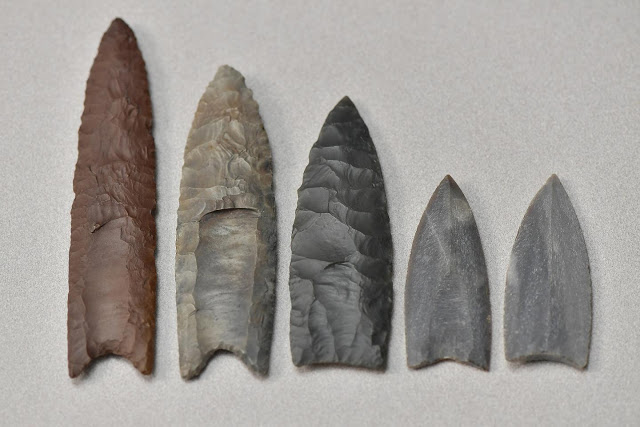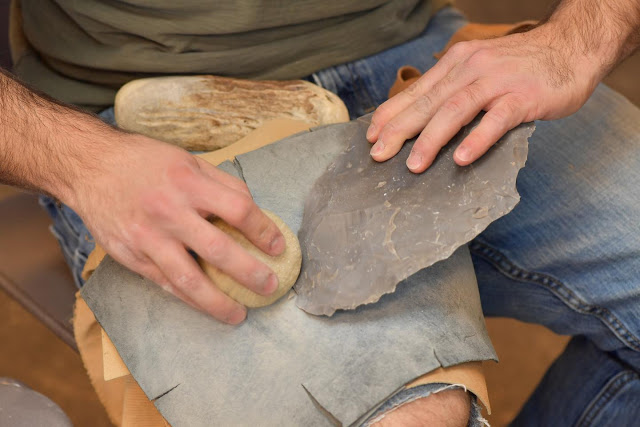

| Online: | |
| Visits: | |
| Stories: |

| Story Views | |
| Now: | |
| Last Hour: | |
| Last 24 Hours: | |
| Total: | |
Archaeologist Explains Innovation of ‘Fluting’ Ancient Stone Weaponry
Kent State University’s Metin Eren, Ph.D., director of archaeology and assistant professor in the Department of Anthropology in the College of Arts and Sciences, and his colleagues are not only asking these questions but testing their unique new theories. They want to better understand the engineering, techniques and purposes of Clovis weapon technologies. Specifically, they study stone projectile points, such as arrowheads and spear points, made by flint knapping, the ancient practice of chipping away at the edges of rocks to shape them into weapons and tools.
Pictured is a collection of Clovis point replicas and casts in the archaeology lab at Kent State University.
Dr. Metin Eren’s experimental approach to archaeology research means his Lowry Hall lab features a ballistics range, stone-weapon creation, and pottery-making.
Credit: Kent State University.
This fluted point turned out to be an invention that allowed these colonizers to travel great distances with some confidence that their weaponry would hold up at least long enough until they could find the next rock quarry to make new points.
Metin Eren, director of archaeology and an assistant professor of anthropology in Kent State University’s College of Arts and Sciences, demonstrates the ancient weapon-making technique of flint knapping a point in his laboratory on the Kent Campus.
“It was risky and couldn’t have been easy to learn how to do this effectively,” Eren explained. “Archaeological evidence suggests that up to one out of five points break when you try to chip this fluted base, and it takes at least 30 minutes to produce a finished specimen. So, though it was a time-consuming process and risky technique, successfully fluted Clovis points would have been extremely reliable, especially while traveling great distances into unknown regions on a new continent. They needed points that would hold up and be used over and over again.”
In their article, the researchers compared standardized computer models of fluted and unfluted points, as well as experimental “real-world” test specimens, and found that the fluted-point base does in fact act as a “shock absorber,” increasing point robustness and ability to withstand physical stress via stress redistribution and damage relocation. In other words, upon impact, the brittle base of the spearhead crumples and absorbs some energy, which prevents fatal breaks elsewhere on the point so it could be reused.
“It’s amazing to think that people 12,000 years ago were flaking shock absorbers and engineering stone weapons in a way that it took 21st century modern engineering to figure out,” Eren said.
“As engineers, we don’t typically get to work with archaeologists, but this project has allowed us the exciting opportunity to provide additional tools from engineering mechanics to explore how fluting affects the behavior of Clovis points,” Story said.
Source: http://www.ineffableisland.com/2017/04/archaeologist-explains-innovation-of.html




